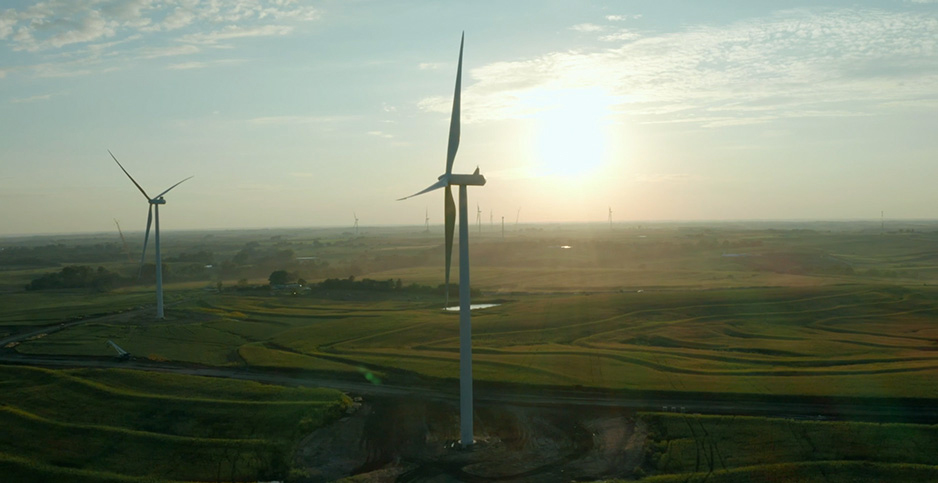FERC last week issued rulings in three SPP dockets, including Tenaska’s complaint over a network upgrade cost assignment; a dispute between Nebraska Public Power District and Tri-State Generation and Transmission; and NorthWestern Energy’s challenge of a qualifying facility.
Split Decision for Tenaska in SPP Complaint
FERC last week ordered SPP to restudy a Missouri wind project by Tenaska, which complained that the RTO erroneously assigned it about $66 million in network upgrade costs (EL21-77).
The commission’s Dec. 16 order found that SPP appropriately applied its authority under its tariff to restudy the project after one or more higher-queued projects withdrew; corrected the omission of 4.5 GW of higher-queued generation; and used the network resource interconnection service (NRIS) standard to evaluate the project’s effects on its system.
At the same time, FERC said SPP’s use of 2019 transmission-planning models in the restudy was unduly discriminatory or preferential. It directed SPP to restudy the project within 60 days using the 2017 planning models and incorporate the 4.5 GW of missing generation. It directed SPP to make a compliance filing within 10 days of the restudy’s completion.
Tenaska alleged that SPP mistakenly assigned the upgrade costs during a restudy of the Clear Creek Wind Project, a 242-MW facility that is interconnected to the Associated Electric Cooperative, Inc. (AECI) transmission system. It said the costs were assigned as part of SPP’s affected system study (AFS) process and asked that they be rolled into regional transmission rates or that FERC set a hearing to determine their equitable allocation. (See Tenaska Challenges SPP Tx Upgrade Costs.)
Clear Creek became operational in May 2020.
The developer requested an NRIS study in 2017. AECI identified SPP and MISO as potential affected systems; MISO’s AFS found no network upgrades were necessary to its system.
In August 2018, Tenaska requested that SPP conduct an AFS of the Clear Creek project. The RTO told Tenaska the project would be queued between the 2016-002 and 2017-001 definitive interconnection system impact studies (DISIS) and that it would use the 2016 cluster’s transfer case, reflecting capacity additions and associated network upgrades, as the base case. That transfer case used SPP’s 2017 Integrated Transmission Planning (ITP) study models, as the basis for its regional transmission planning studies.
SPP’s first AFS study identified $31.2 million in network upgrades it said were necessary to connect the project to the AECI system. The grid operator twice revised the study, in November 2018 and March 2019; the latter found approximately $33.5 million in network upgrades. FERC noted SPP only identified network upgrades to resolve constraints when modeling for energy resource interconnection service (ERIS).
After Tenaska began construction in 2019, it said it was told by SPP that the RTO intended to restudy the project because a higher-queued project had withdrawn from the interconnection queue. The RTO then told Tenaska in May 2020 that, because the initial studies’ models were more than a year old, staff intended to conduct the affected system restudy using the 2019 ITP models.
The study identified $763 million in network upgrades to the AECI system and the need for NRIS network upgrades. SPP said it had inadvertently omitted 4.5 GW of higher-queued generation on the MISO transmission system in the project’s first AFS and the DISIS 2016-002 cluster. The RTO deemed the initial AFS invalid and decided to use the 2019 ITP models for the restudy that lowered Tenaska’s cost responsibility to $106.8 million. In February 2021, that amount was lowered again to $91 million.

In March 2021, SPP posted the most recent affected system restudy results, assigning about $99 million in network upgrades to Clear Creek, comprised of $34 million in ERIS network upgrade costs and $66 million in additional network upgrade costs necessary to provide NRIS identified in the affected system restudies.
Commissioner Alison Clements concurred with the order “only because it conforms to the standards and requirements currently applicable to SPP’s affected system study process” and filed a separate statement.
She said the order demonstrates that reasonable efforts and good utility practice standards are “currently so lenient that neither SPP’s delay of over a year in completing the restudy process … nor SPP’s serious omission of 4.5 GW from its initial studies rises to the level of a violation.”
“I am sympathetic to the formidable challenges that overwhelmed regional interconnection queues cause for transmission owners, operators and interconnection customers,” she wrote. “Our regulatory standards do not mean much, however, if they are lenient to the point of impotence. As the commission turns to addressing transmission and interconnection reforms in the coming months, the standards applicable to interconnection studies must be among the topics to receive the commission’s attention and careful scrutiny.”
NPPD Complaint Rejected
The commission also rejected a Nebraska Public Power District (NPDD) request that FERC find Tri-State Generation and Transmission’s inclusion of certain costs in its 2021 annual transmission revenue requirement (ATRR) unjust and unreasonable (EL21-100).
FERC said NPPD did not demonstrate that Tri-State’s inclusion of amounts related an agreement between the two SPP members seriously harmed the public interest.
NPPD in 2018 asked the commission to direct Tri-State to remove from its ATRR costs related to an earlier Western Nebraska Joint Transmission Agreement (NETS Agreement) between the two that governed the use of transmission facilities. Under the agreement, the party making greater use of the facilities was required to make an annual cost equalization payment to the other party.
The agreement originally had a 2020 termination date, which Tri-State agreed to extend to March 1, 2021, to allow for negotiations between the two and SPP. The cooperative made its final payment under the agreement to NPPD in February 2021.
In July, SPP posted Tri-State’s update of its 2021 ATRR for the rate year beginning Sept. 1 and included an annual cost-equalization payment of more than $1.84 million. NPPD said the payment’s inclusion led to unjust and unreasonable rates because the NETS agreement was terminated and Tri-State had made its last payment. It also alleged the cooperative was no longer incurring any costs under the agreement and that Tri-State refused to remove the payment from the annual update process.
FERC said it found the disputed cost component was included in 2017 settlement agreement between NPPD and Tri-State over SPP’s placement of the Tri-State in NPPD’s transmission zone. (See FERC Rejects NPPD Objection to Tri-State Zonal Placement.)
The commission said that under the agreement, NPDD had to demonstrate that the proposed modifications to the ATRR and underlying rates satisfy the “public interest” application of the just and reasonable standard. It said the utility had failed to do so.
FERC also found that NPPD agreed in the settlement to Tri-State’s use of a formula rate based on the prior calendar year’s financial data. It said that by arguing that the cooperative should not be permitted to include the annual cost equalization payment Tri-State made in 2020 in its 2021 ATRR, “NPPD is seeking to modify the nature of the formula rate and, thus, modify the settlement agreement.”
“We find that NPPD, as a settling party, must make a showing sufficient to demonstrate that, without the proposed changes, the settlement agreement ‘seriously harms the public interest,’” the commission wrote.
NorthWestern Protest Denied
FERC denied NorthWestern Energy’s (NASDAQ:NWE) protest of a solar developer’s self-certification as a small power production qualifying facility (QF) under the Public Utility Regulatory Policies Act (PURPA) of 1978 (QF21-1213).
Gallatin Power Partners in September filed a form self-certifying its Shields Valley Solar Facility, to be interconnected with the NorthWestern system in Montana, as a QF. It said the development would have a 160-MW nameplate capacity but would also incorporate a battery-storage system with an expected 80 MW capacity on the solar array’s DC side, resulting in a maximum net AC power production capacity of 80 MW.
NorthWestern protested, arguing that the solar array and the storage systems were separate power-production facilities and that their capacities should be analyzed separately and then aggregated, resulting in a production capacity substantially larger than 80 MW. It based its argument on FERC’s March rehearing order for Broadview Solar that restored longstanding commission precedent for determining QF eligibility and extending it to integrated battery energy storage. (See FERC Reverses Ruling on Montana QF.)
The commission determined that because the Shields Valley facility could only deliver a maximum of 80 MW of AC electricity to NorthWestern’s system at any time, its production capacity “cannot and will not” exceed 80 MW. It said NorthWestern’s protest relitigated the Broadview rehearing orders’ capacity analysis and “effectively” requested that FERC overturn its findings and amounted to a “collateral attack” on those orders.
Commissioner James Danly concurred in part and dissented in part, saying as he did in the Broadview orders that “there is no net-output exception” to PURPA’s production capacity threshold.
However, Danly also disagreed with NorthWestern’s protest, noting batteries and other storage systems cannot be included when determining a facility’s “power production capacity” because they “do not ‘produce’ power — they simply store it for later delivery.”




